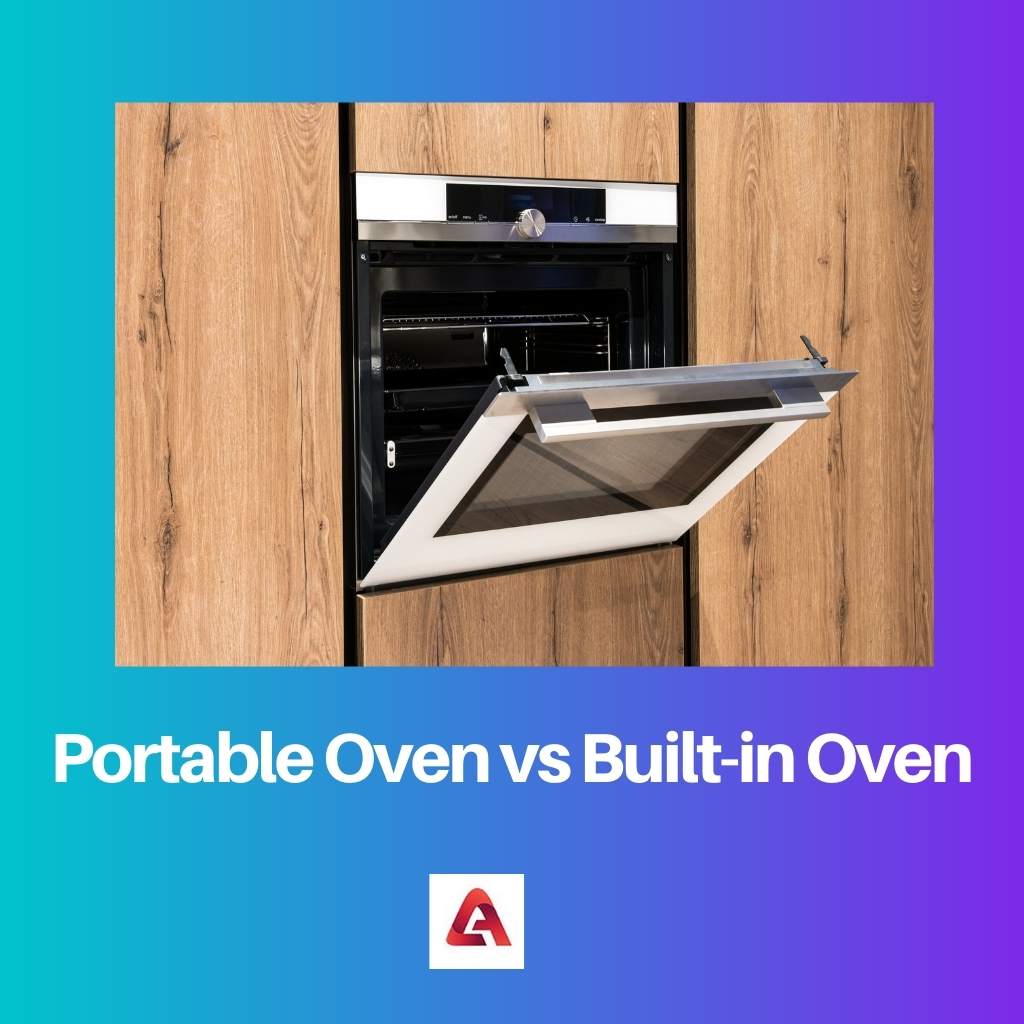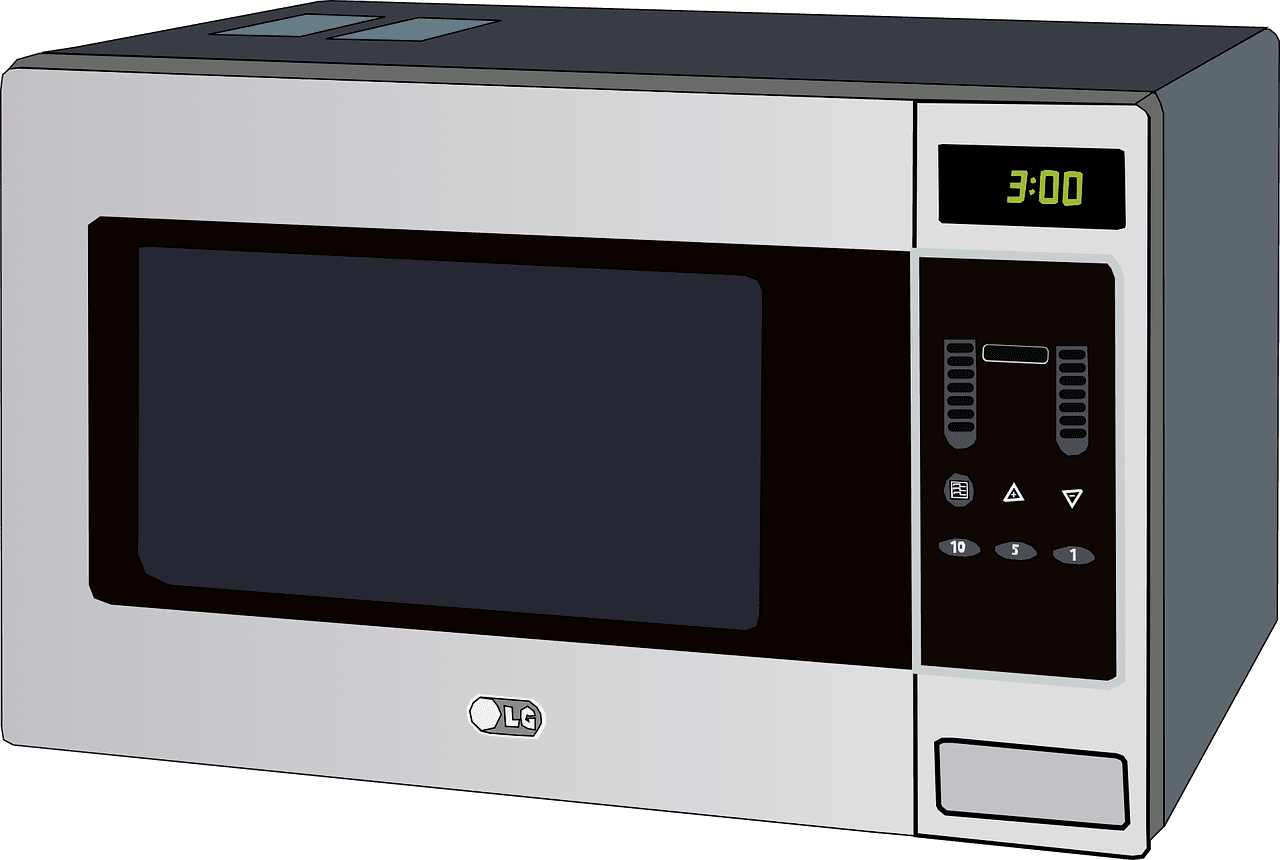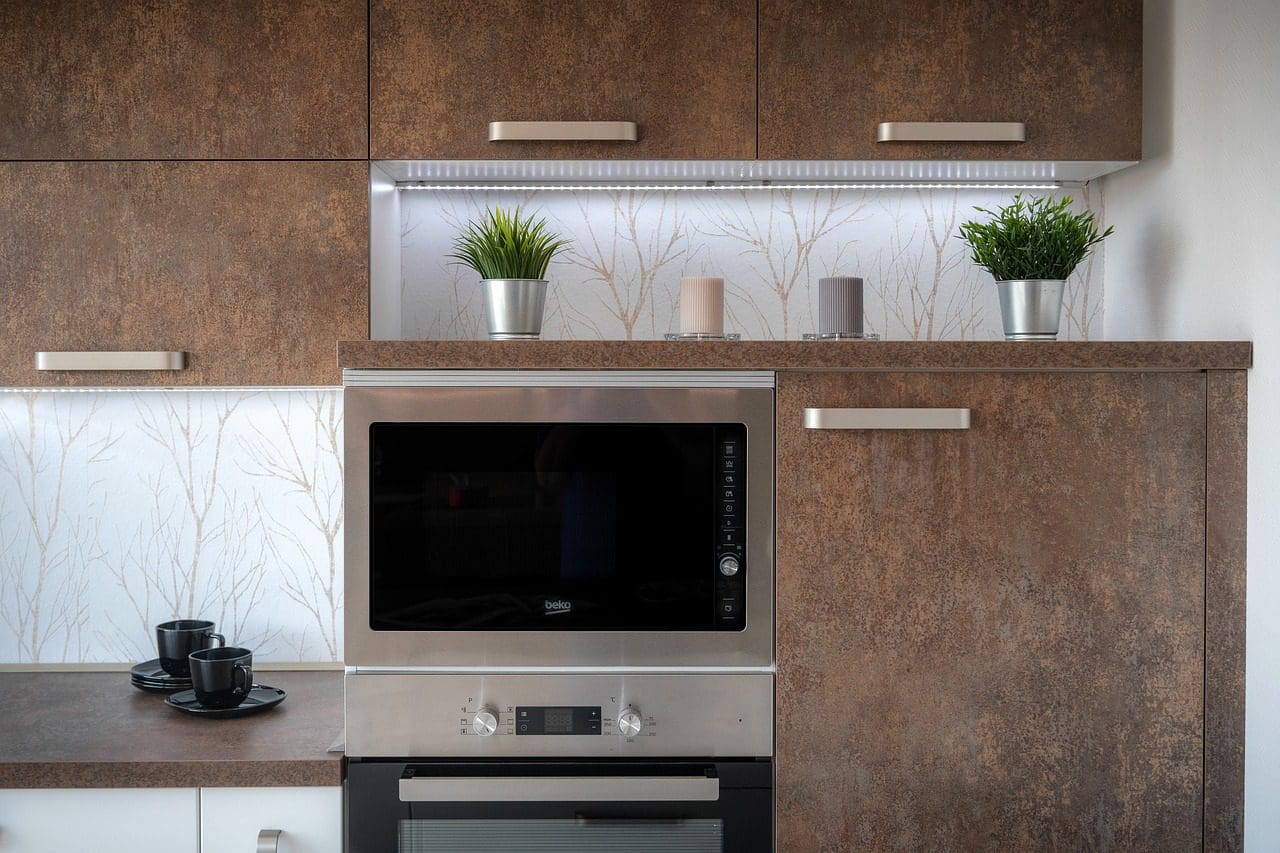Portable Oven: Convenient for those who move frequently or have limited kitchen space; versatile and can be used in various locations.
Built-in Oven: Offers a seamless and integrated look in the kitchen, often with larger capacity and advanced features; suitable for those prioritizing a permanent and cohesive kitchen design.
Key Takeaways
- Portable ovens are standalone units that can be moved around and placed on a countertop, while built-in ovens are installed in a fixed location, such as a wall or a cabinet.
- Portable ovens are more convenient for small kitchens or temporary cooking needs, while built-in ovens are more suitable for larger or long-term use.
- Built-in ovens offer more customization options and can be integrated with other appliances, while portable ovens are easier to maintain and clean.
Portable Oven vs Built-in Oven
An oven that can be moved easily from one place to another is called a portable oven. The size of the portable oven is small. A portable oven is easy to clean. An oven which is fitted on a fixed location is called a built-in oven. The position of the built-in oven cannot be changed. Built-in-ovens are big in size. They consume more power.

The Portable Oven is a lightweight model of the Ovens available in the market that can be kept in the kitchen wherever you require it to be. It can be moved from one place to another.
The Built-in ovens, as the name suggests, are the ones that fit in your kitchen’s cabinet. It can be set on the countertop or even near the stovetop.
Comparison Table
| Feature | Portable Oven | Built-in Oven |
|---|---|---|
| Size | Smaller (typically under 1 cubic foot) | Larger (typically 2-4 cubic feet) |
| Installation | No installation required, sits on countertop | Requires professional installation in cabinets |
| Mobility | Can be easily moved around the kitchen | Fixed in one location |
| Price | Generally less expensive | Generally more expensive |
| Cooking Capacity | Suitable for smaller meals or single servings | Suitable for larger meals and baking |
| Features | May have fewer features (e.g., basic baking, broiling) | May have more features (e.g., convection, self-cleaning) |
| Aesthetics | May not match existing kitchen decor | Can create a seamless look with cabinets |
| Countertop Space | Requires countertop space | Frees up countertop space |
What is Portable Oven?
Portable ovens have become increasingly popular due to their convenience and versatility. These compact cooking appliances are designed for on-the-go use, allowing users to enjoy freshly cooked meals in various settings. In this detailed exploration, we will delve into the various aspects of portable ovens, covering their features, types, advantages, and applications.
Types of Portable Ovens
1. Electric Portable Ovens
Electric portable ovens are powered by electricity and are suitable for indoor and outdoor use. They come with heating elements and a temperature control system, providing precise cooking conditions. These ovens are often compact and lightweight, making them easy to carry.
2. Propane Portable Ovens
Propane portable ovens use propane gas as a fuel source, making them ideal for outdoor activities such as camping and picnics. They offer a quick and efficient cooking option, with the added benefit of being independent of electricity sources.
3. Solar-Powered Portable Ovens
These innovative ovens harness solar energy to cook food. They are environmentally friendly and are particularly useful in regions with abundant sunlight. However, their efficiency may depend on weather conditions and the availability of sunlight.
Features of Portable Ovens
1. Compact Design
Portable ovens are characterized by their compact and lightweight design, making them easy to transport and store. This feature is especially valuable for individuals who frequently travel or engage in outdoor activities.
2. Temperature Control
Most portable ovens come equipped with temperature control features, allowing users to adjust heat levels for various cooking requirements. This ensures that a wide range of dishes can be prepared with precision.
3. Quick Heating
Efficient heating elements, common in portable ovens, contribute to rapid preheating. This feature is advantageous for those who seek a quick and convenient cooking experience, especially in time-sensitive situations.
Advantages of Portable Ovens
1. Portability and Versatility
The primary advantage of portable ovens is their portability, enabling users to cook anywhere, from campsites to beach outings. Their versatility allows for diverse cooking styles, accommodating the preparation of a variety of dishes.
2. Energy Efficiency
Many portable ovens are designed with energy efficiency in mind. Electric models often have insulation features, while solar-powered ovens capitalize on renewable energy sources, making them eco-friendly.
3. Independence from Traditional Cooking Appliances
Portable ovens offer an alternative to traditional cooking appliances, providing independence from fixed kitchen setups. This is particularly valuable for outdoor enthusiasts and individuals with limited kitchen access.
Applications of Portable Ovens
1. Camping and Outdoor Activities
Portable ovens are popular among campers and outdoor enthusiasts who want to enjoy home-cooked meals during their adventures. The variety of fuel options caters to different outdoor settings.
2. Emergency Situations
In emergency situations where access to conventional cooking facilities may be limited, portable ovens can serve as a reliable solution. They provide a means to prepare hot meals when needed most.
3. Traveling and Road Trips
For individuals on the move, portable ovens offer the convenience of preparing meals while traveling. Whether on a road trip or in a recreational vehicle, these ovens add a touch of home-cooked comfort.

What is Built-in Oven?
A built-in oven is a kitchen appliance designed to be seamlessly integrated into cabinetry or a wall, providing a sleek and space-saving solution for cooking and baking. Unlike freestanding ovens, built-in ovens are installed within kitchen cabinets at eye level or under countertops, offering a streamlined and aesthetically pleasing look to the kitchen.
Types of Built-in Ovens
1. Conventional Ovens
Conventional built-in ovens are the most basic type, featuring both upper and lower heating elements. They are suitable for general baking and roasting but may have uneven heat distribution.
2. Convection Ovens
Convection built-in ovens include a fan that circulates hot air throughout the oven, ensuring even heat distribution. This results in faster cooking times and more consistent baking.
3. Combination Ovens
Combination built-in ovens combine the features of conventional and convection ovens. They offer flexibility, allowing users to choose between cooking modes based on their specific needs.
4. Steam Ovens
Steam built-in ovens use steam to cook food, preserving nutrients and enhancing flavors. They are ideal for health-conscious individuals who want to prepare meals with minimal oil or fat.
Features
1. Size and Capacity
Built-in ovens come in various sizes to fit different kitchen configurations. The capacity is measured in cubic feet and determines the amount of food that can be cooked at once.
2. Control Panels
Modern built-in ovens feature digital control panels with touchscreens or buttons, allowing users to set precise temperatures, cooking times, and select cooking modes effortlessly.
3. Self-Cleaning
Many built-in ovens come equipped with self-cleaning features, utilizing high temperatures to burn off food residues. This simplifies the cleaning process for users.
4. Energy Efficiency
Energy-efficient models use advanced technologies to reduce energy consumption, making them environmentally friendly and cost-effective in the long run.
5. Safety Features
Safety features such as child locks, cool-touch surfaces, and automatic shut-off contribute to a secure cooking environment, especially in households with children.
Installation and Maintenance
1. Professional Installation
Installing a built-in oven requires professional expertise to ensure proper electrical or gas connections and ventilation. This ensures the oven operates safely and efficiently.
2. Regular Maintenance
Regular cleaning and maintenance are essential for the longevity and performance of a built-in oven. This includes wiping down surfaces, cleaning filters, and addressing any malfunctions promptly.
Advantages and Considerations
1. Advantages
- Space-saving design
- Enhanced aesthetics
- Versatility in cooking options
- Improved energy efficiency
2. Considerations
- Installation complexity
- Initial cost
- Limited portability compared to freestanding ovens

Main Differences Between Portable Oven and Built-in Oven
- Mobility:
- Portable ovens are designed to be easily moved and can be transported to different locations, making them ideal for outdoor events or camping.
- Built-in ovens are permanently installed in a kitchen or another designated space and cannot be easily moved.
- Installation:
- Portable ovens typically require minimal or no installation, as they are standalone units that can be placed on a countertop or other flat surface.
- Built-in ovens need to be professionally installed into cabinetry or wall structures, involving more complex installation processes.
- Size and Capacity:
- Portable ovens are generally smaller in size and have limited cooking capacities compared to built-in ovens.
- Built-in ovens come in a variety of sizes and offer larger cooking capacities, suitable for handling more extensive cooking tasks.
- Power Source:
- Portable ovens often operate using standard electrical outlets or propane tanks, providing flexibility in choosing a power source.
- Built-in ovens are typically hardwired into the electrical system of a home and may offer more advanced power options.
- Functionality:
- Portable ovens may have fewer features and cooking options compared to their built-in counterparts.
- Built-in ovens often come with a wider range of features, cooking modes, and advanced technologies for more versatile cooking.
- Aesthetics:
- Portable ovens have a more utilitarian design, focusing on functionality and portability.
- Built-in ovens are integrated into the kitchen design, offering a seamless and cohesive look with other kitchen appliances and cabinetry.
- Cost:
- Portable ovens are generally more cost-effective, making them a budget-friendly option for those seeking basic cooking capabilities.
- Built-in ovens tend to be more expensive due to their larger size, advanced features, and the professional installation required.
- Versatility:
- Portable ovens are versatile for outdoor use, camping, and as supplementary cooking devices.
- Built-in ovens are designed for daily cooking needs and are a primary cooking appliance in a kitchen, offering a wide range of cooking options.

- https://escholarship.org/content/qt3s29h7wd/qt3s29h7wd.pdf
- https://escholarship.org/content/qt3s29h7wd/qt3s29h7wd.pdf

The article presented a thorough review and comparison of portable and built-in ovens, providing an in-depth understanding of both types of appliances.
Indeed, it’s essential to have access to comprehensive resources that can assist in making such decisions.
The thorough explanation of portable ovens versus built-in ovens is quite elucidating. I’m seriously considering buying a built-in oven for my kitchen now.
I’m glad that the post was helpful. The consideration of your overall kitchen setup is an essential part of the decision-making process.
Absolutely, the integration of a built-in oven is something to think about; it’s more than just the stand-alone features that matter.
The comparison table was especially helpful in understanding the differences between portable and built-in ovens. I feel confident in deciding what suits my needs best.
The structured comparison table was helpful for me too. It makes the decision-making process more manageable.
Having such resources available is undoubtedly beneficial, especially when making significant decisions about appliances.
The level of detail in the article made it relatively easy to distinguish the differences between portable and built-in ovens.
Absolutely. The more information we have, the more informed our decisions can be. It’s great to have such articles available.
The detailed explanation of portable and built-in ovens was highly valuable in making a well-informed decision about the type of oven to purchase for my home.
Having a clear understanding of these differences is indeed vital in choosing the right appliance. I’m glad this post was a help to you.
The post about portable and built-in ovens was highly informative and provided a great understanding of the two types of kitchen appliances.
I’m glad there are articles like this that provide in-depth knowledge on practical household topics.
I concur with your point. It’s essential to have reliable information when making decisions about significant investments like kitchen appliances.
Both the written description and the table provided helped me weigh up the differences between portable and built-in ovens. I now have a clear picture of what would work best for me.
Understanding all the important aspects of these ovens is crucial, and this article did an excellent job of presenting the information.
I second your thoughts. The comparison table played a significant role in simplifying the decision-making process for me as well.
I wanted to buy a portable oven for my kitchen, but I wasn’t sure about the differences between a portable oven and a built-in one. This article really helped me to understand the pros and cons of each type.
I had the same experience. This article has truly helped me make an informed decision.
The comparison table was particularly helpful. It made it easy to see the main differences between the two types of ovens.
After reading this article, I have a better understanding of the practical differences between portable and built-in ovens. It made a complicated decision easier!
Absolutely. Having a clear understanding of the differences makes it easier to choose the right appliance for your kitchen.
The simplified explanation was very beneficial for me too. The right information makes decision-making less stressful.
The article’s references are quite reliable, and the distinction between portable and built-in ovens is presented in a structured and comprehensive way.
I agree. Good references ensure the content’s accuracy and make the entire article more trustworthy.